What are the early signs of a blocked blood vessel?
Hello, I am glad to answer your question. Nowadays, more and more people develop cardiovascular and cerebrovascular diseases, and even people in their 30s and 40s develop serious cardiovascular and cerebrovascular diseases such as myocardial infarction and cerebral infarction.
Today, we will talk to you about what signals there will be in the early stage if there is a blood vessel blockage? So that we can prevent and regulate early.
First, head symptoms: headache and dizziness is one of the most common manifestations. Generally appear blood vessel blockage, performance to the head, there will be insufficient blood supply to the heart and brain, headache and dizziness, light dizziness, the serious can appear the sky and the earth, blurred vision. In fact, many diseases are very blood vessel blockage related, if the long-term blood supply to the heart and brain is insufficient, such as cerebral infarction, myocardial ischemia, myocardial infarction, coronary heart disease and other problems will come uninvited.
Second, heart symptoms: early vascular blockage, can lead to atherosclerosis, serious myocardial ischemia, early can be manifested as, precordial discomfort, chest tightness and shortness of breath, a sense of fatigue, like long out of breath, excessive activity symptoms are obvious.
Third, the joint symptoms of the extremities: if there is a blood vessel blockage, it will certainly lead to the peripheral blood circulation of the extremities, joint pain, stiffness, and limited movement. The limbs are afraid of cold, numbness, muscle pain. If the blockage is serious, there will also be local skin color changes, white, black bruises and so on.
Fourth, mental state changes: due to local ischemia, especially ischemia of the heart and brain, there will be mental depression, fatigue and sleepiness, drowsiness, dizziness and sleepiness. There is also a more obvious change, that is, the whole day will want to sleep, yawning, lethargy, this is a typical performance of insufficient blood supply to the heart and brain, must pay attention to. There is also memory loss, always forgetting things, slow reaction.
Fifth, blood changes: due to local ischemia, resulting in clogged blood vessels, atherosclerosis, poor blood circulation, there will be high blood pressure, transient cerebral ischemic attack, and soon return to normal, which is the brain to give us a warning, meaning that the body is beginning to have problems, the need for regulation.
Sixth, deep arterial and venous blockage: prone to thrombosis, arterial thrombosis, manifested as intermittent claudication, difficulty in walking, lower limb pain, coldness, numbness, or skin color change. Venous thrombosis, local pain, swelling, skin color change.
In short, as long as there is a blockage in the blood vessels, regardless of the severity, there will be a variety of reactions, and it must be detected early and treated early to avoid serious illnesses over a long period of time.
Clogged blood vessels are very serious diseases, and sometimes the clogging is so acute that it is too late to send out signals, for example, we always hear about the sudden death of middle-aged people.
The most important cause of sudden death is heart disease, and the most important cause in heart disease is blockage of blood vessels in the heart, which is also known as acute myocardial infarction. So the blockage of this part of the blood vessels is sometimes not signaled and leads directly to sudden cardiac arrest.
Of course there are some signs of blocked blood vessels in no part of the body, but because there are blood vessels all over the body, blocked blood vessels in each part of the body give different signals.
Currently the most common and dangerous blood vessel blockages include: blockage of arteries in the heart, carotid arteries, cerebral blood vessels, pulmonary arteries, arteries of the lower extremities and so on. In the case of chronic occlusion, sometimes there may not be any symptoms , but in the case of acute vascular blockage, most of them have some signals.
We explain them one by one:
I. Signs of blocked arteries in the heart
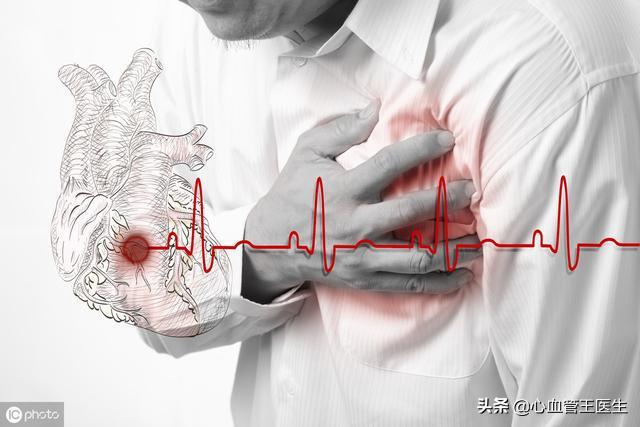
A narrowing of the arterial vessels of the heart of more than 50% is called coronary artery disease, a narrowing of more than 70% may be symptomatic, and when the blockage is 99-100% it is a myocardial infarction.
Angina occurs when the blood vessels of the heart are heavily narrowed and often signals a variety of angina: pain in the precordial area, chest pain, toothache, headache, tightness in the throat, back pain, shoulder pain, epigastric pain, chest pain, breath-holding, and other signals. These signals occur for about 2-15 minutes at a time, mostly after activity, and are gradually relieved by rest.
If it is an acute occlusion of the heart artery, that is acute myocardial infarction, then the most typical manifestation is the pressure-like persistent pain in the back of the sternum that is not relieved, accompanied by chest tightness and suffocation, accompanied by profuse sweating. The atypical signals are the various angina pectoris persistent unrelieved is the signal of myocardial infarction. The most serious is fainting and sudden death.
The diagnosis can be confirmed by these signals plus an EKG and cardiac enzymes, and the vessel must be opened immediately by thrombolysis or stenting to save the life.
Second, carotid artery blockage signals

Severe stenosis of the carotid artery may be characterized by dizziness, lightheadedness, tinnitus, memory loss, blurred vision, insomnia and dreaming; vision loss, hemianopsia, dark twilight; transient aphasia, hemiparesis, hemianopia, and so on. When the carotid artery is completely and acutely blocked, it will lead to cerebral infarction, then the sign of cerebral infarction appears.
The diagnosis can be confirmed by carotid ultrasound, and after diagnosis, treatment such as medication or surgery can be chosen according to the specific situation.
Third, cerebrovascular blockage signals
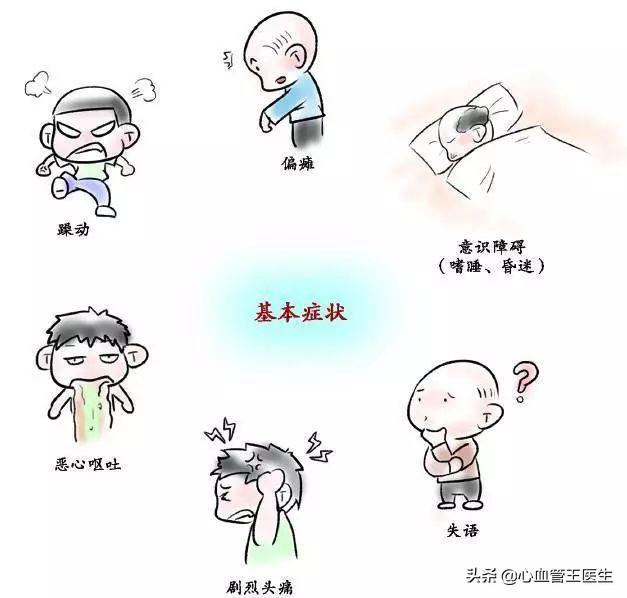
Cerebrovascular blockage is cerebral infarction, there may be a distortion of the mouth and eyes, aphasia, hemiplegia, hemiplegia, dizziness, headache, numbness of the limbs, numbness of one side of the face or hands and feet, or numbness of the tongue, lips, or numbness of the upper and lower limbs on the one side, sudden weakness of one side of the limbs or inflexible activities, walking skewed, unsteady walking, slurred speech, questions but not answers, nausea, vomiting, or eructation, facial paralysis and tongue paralysis, hemianopsia, choking and coughing when drinking water, Difficulty in swallowing, loss of consciousness, mental retardation, lethargy, etc., even leading to death.
The diagnosis can be confirmed by brain CT or MRI, and thrombolysis or thrombolysis is required immediately after diagnosis.
Fourth, the signals of pulmonary artery blockage
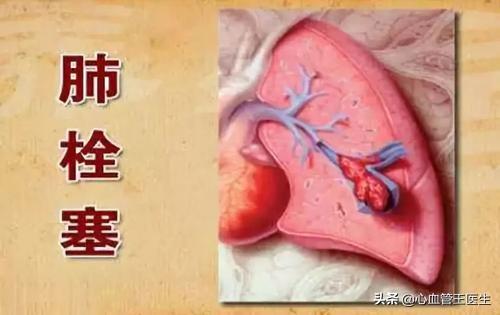
It is also known as pulmonary embolism. When pulmonary embolism occurs, it can also lead to sudden death, and the common typical manifestations are dyspnea, chest tightness and breath-holding, chest pain, low blood pressure, fast heart rate, blackness in front of the eyes, fainting, weakness, pallor, cold sweat, coughing, etc., or signals such as anxiety, tiredness, nausea, convulsions, and coma.
The diagnosis can be made by these signals plus ECG or D2 polygraphy, confirmed by enhanced thoracic pulmonary vascular CT or angiography, and after diagnosis, thrombolytic or anticoagulant therapy can be chosen, depending on the circumstances.
V. Signals of clogged arteries in the lower extremities
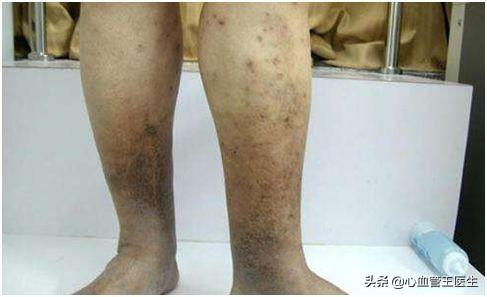
Intermittent claudication is the most typical sign of arterial blockage in the lower limbs. Intermittent claudication refers to the sudden onset of unilateral or bilateral backache and leg pain when walking, and numbness and weakness of the lower limbs, which will be fine after a short period of rest, and then continue to show the same symptoms after walking for a while. Of course, the lower limbs may also appear cold, pain, discoloration, local arterial fluctuations disappear.
The diagnosis can be confirmed by ultrasound of thrombus in the lower limbs, and treatment such as thrombolysis or anticoagulation is taken after the diagnosis.
These common blood vessel blockages we are talking about are arterial vessels, and blockages can also occur in veins, such as lower extremity vein thrombosis.
VI. Lower extremity venous thrombosis
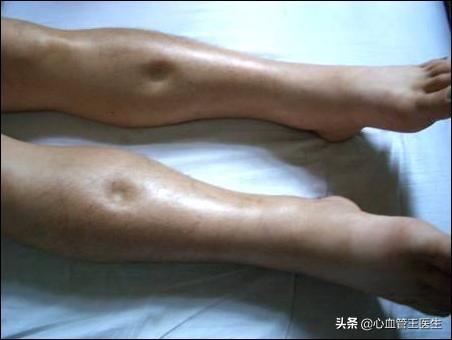
Blood clots form in the lumen of the veins for various reasons, that is, the blood flow in the deep vein vessels is poor and clots are formed, which can block the vessels. When DVT occurs, there are definite risk factors present in about 50-75% of cases. Surgery, trauma, bed rest, oncological treatment (hormonal, chemotherapy or radiotherapy), advanced age, heart or respiratory failure, nephrotic syndrome, obesity, smoking, varicose veins, hereditary or acquired thrombotic tendencies, etc., which are often strongly associated with DVT, can lead to the development of DVT.
The biggest danger of deep vein thrombosis is that once the thrombus is dislodged, it will run with the blood flow to the pulmonary vessels, causing blockage and leading to pulmonary embolism. Acute severe pulmonary embolism has a mortality rate of up to 15% and can even lead to sudden death, which shows the great danger of DVT!
That is, the pulmonary embolism we talked about above is actually caused by the dislodgment of a blood clot after a venous thrombosis.
In short, the signals of clogged blood vessels are different in different parts of the body, but most of the time when they are signaled, it means that the blood vessels are heavily narrowed or have become completely clogged, and only first aid can be given.
But most of the clogged arteries are caused by atherosclerosis, so atherosclerosis is the earliest signal of clogged blood vessels, but this signal is silent. We can't feel it, we only know that high blood pressure, diabetes, high blood fat, smoking, alcoholism, sedentary and not exercising, obesity, unhealthy diet, staying up all night, bad mood and so on are the root causes of atherosclerosis.
So, three highs and an unhealthy lifestyle are the earliest signs of clogged blood vessels!
People with elderly family members often encounter elderly people visiting the hospital for vascular blockages or forPrevention of blood vessel blockageAnd ask the doctor to unclog the blood vessels with water.(especially in winter)For the condition of clogged blood vessels, the general public may think that it is more likely to happen to the elderly, but as our standard of living continues to improve, as well as young peopleWorse and worse habits.The symptoms of blood vessel blockage are nowThe trend towards younger and youngerAs a result, blood vessel obstruction is not only occurring in the elderly, but is also becoming more common in the younger population. And if you want to liveBetter health and better prevention of clogged blood vesselsIn addition, we should pay more attention to the risk factors of cardiovascular and cerebrovascular blockage and control them at an early stage, so as to nip the disease in the bud.
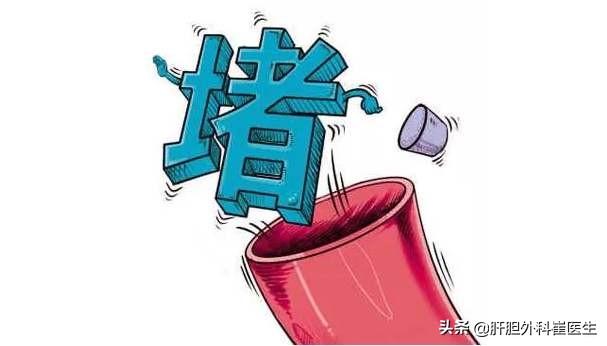
What are the telltale signs of a blocked blood vessel in its early stages?
- The first thing we need to understand is that a blocked blood vessel is just a generalized term thatVascular blockage is categorized as cardiovascular blockageThe carotid artery blood vessel blockage, limb blood vessel blockage, different blood vessel blockage will have different signals to convey to our body, below we will specifically analyze the blood vessel blockage early body will have what signals.

- Early stages of vascular blockageOften there are no symptomsof the world, unlessWhen a blood vessel is blocked it already affects the blood and oxygen supply to the organsThe symptoms of blood vessel blockage can be different. In that case then, the symptoms will vary depending on the blockage of the blood vessels, and here are a few of the more important areas:
- If it's a blockage of a blood vessel in the heart.In the early stages of arterial blockage in the heart, the coronary blood vessels that supply blood and nutrients to our heart are most often affectedCoronary artery blockage affects the blood supply to the heart and may affect the functioning of the heart. Coronary artery blockage patients in the early stage of the appearance ofSymptoms of unstable blood pressure, chest tightness, chest pain, tightness of breath, palpitations and even low-grade feverIf you have a cardiovascular problem, especially if you are more active and need more oxygen, you need to go to the hospital as soon as possible to be checked and evaluated for a cardiovascular problem.
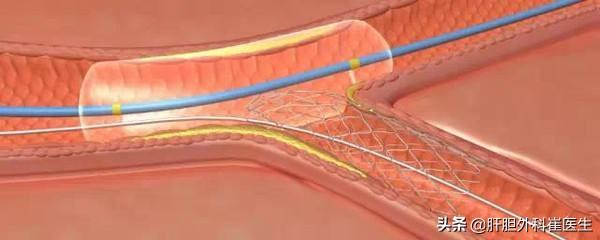
- Blocked blood vessels in the brain can cause dizziness, vomiting and vertigo.; and carotid artery vessel blockage, patients may often experience preHeadaches and dizziness, numbness in the arms, and in severe cases even tinnitus, hallucinations, and vision lossThe appearance of symptoms such as congestion of the fundus of the eye, etc.; if the arterial vascular clogging plaque is dislodged, blocking to the arteries within the brain may appear acute cerebral infarction phenomenon, and then the appearance ofHemiplegia, weakness, numbness, and aphasia of one limb can be severe and fatal.If these very obvious signs do appear, then you should immediately go to a regular hospital for a thorough examination.
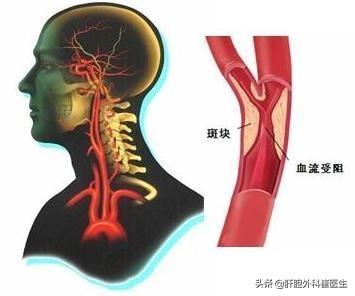
- Early blockage of blood vessels in the extremities if the blockage does not affect our blood supply, and usually there are no symptoms if there areCold, painful limbs, decreased arterial pulsations, skin color changesSymptoms such as these must be taken care of by going to a regular hospital if necessary. Common lower extremity vascular blockage, but also likely to form varicose veins in the legs as well as the loss of pain, serious cases are likely to causeParalysis of the lower limbs, or even conditions such as amputation;This is especially important to be aware of if diabetics are experiencing this condition, because if once theInfection of broken skin, will be very difficult to heal and in severe cases can lead to amputation. So when our feetProlonged numbnessIf we feel that when we walk, our legs are particularly weak and the blood vessels in our legs have abnormal protrusions, we should go to the hospital in time for a checkup, so as to ensure our health and reduce the risk of the disease.
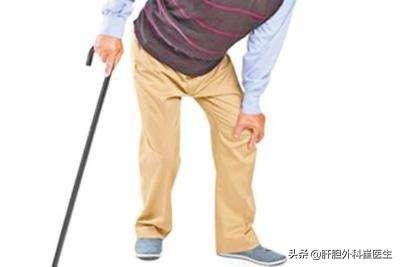
Blood vessel blockage is dominated by blood clots and plaque embolism, and blood vessel blockage in different parts of the body will have different manifestations. The common ones are as follows:
I. Blockage of cerebral arterial vessels:There are often symptoms such as dizziness and headache in the early stages, and in the case of chronic cerebral vascular sclerosis there may be hand tremors and head shaking in Parkinson's disease. Atherosclerosis is a chronic process, which also causes brain atrophy, intellectual decline and cognitive decline. Once acute cerebral artery embolism occurs, it is an acute and critical condition. Previously in the clinical encounter with a young male patient, long-term and friends drink beer, eat late-night snacks, often stay up late. Suddenly cerebral thrombosis coma hospitalized, after surgery still did not wake up, early forties, no children, no children, no marriage, poor old mother at home day and night accompaniment, that is during the New Year's period, look at the heartbreaking.

II. Clogged heart arteries:Mainly myocardial infarction and angina pectoris. When the initial blockage of blood vessels is not serious, there may be occasional symptoms such as chest tightness, panic, etc., and when the symptoms worsen, there will be obvious discomfort and pain in the anterior region of the heart, and the symptoms will be aggravated after activities.
III. Renal artery embolization:Renal artery embolism is clinically less common than the above two conditions. When renal artery stenosis begins to occur, there will be sudden high blood pressure, or hypertension on top of pre-existing high blood pressure that is difficult to control with antihypertensive drugs.
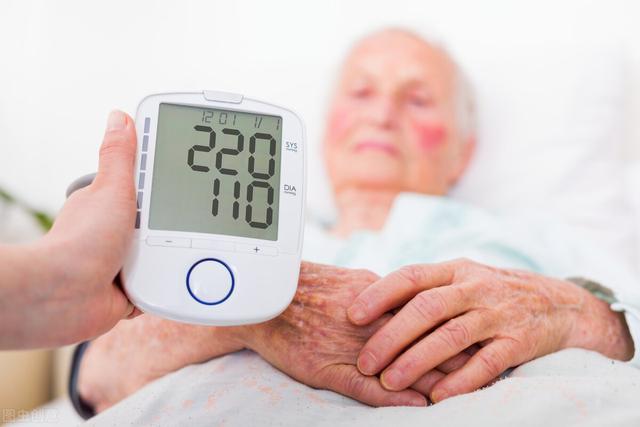
Fourth, blockage of blood vessels in the lower limbs.
Limb vascular blockage should be divided into arterial vascular blockage and venous vascular blockage. Lower extremity arterial vascular blockage manifested as lower extremity limb ischemia, lower extremity coldness, numbness, intermittent claudication and other symptoms, disease progression of the late toes gangrene, ulceration and so on. Lower extremity venous blood vessel blockage is manifested as lower extremity swelling, superficial vein expansion, accompanied by limb pain, this is called venous thrombosis, there is a risk of pulmonary embolism.
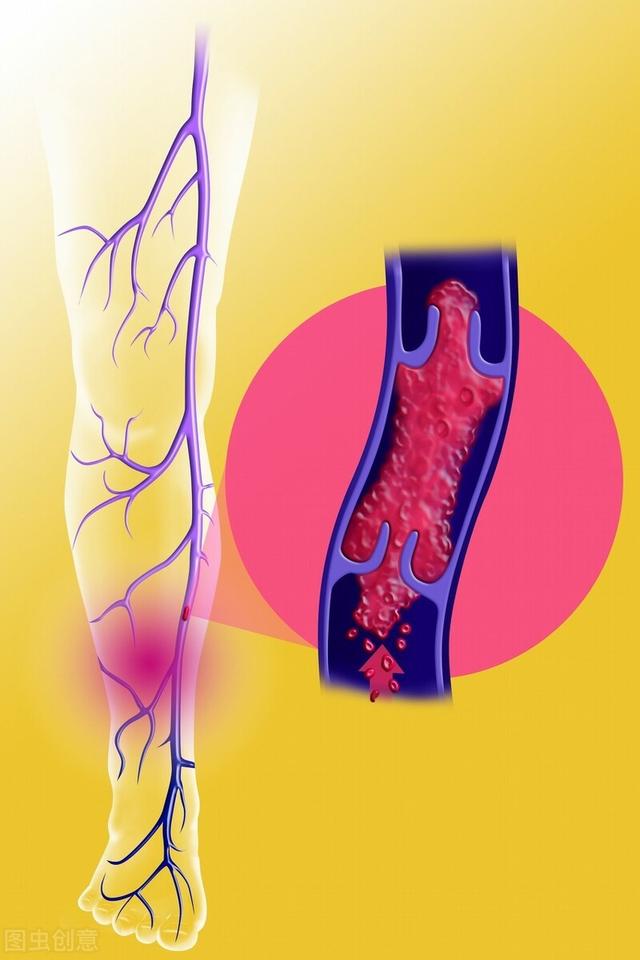
For more health science information, please follow@Apricot Grove Clock
Share a little health tip every day for your health!
Often some elderly people go to the hospital to see a doctor, asked the doctor to hang the needle water dredging dredging blood vessels (especially in winter), said that this can prevent blood vessel blockage. Unblocking the blood vessels of the drug professional point we called blood-sludging drugs, in the acute stage of the disease, such as acute cerebral infarction, acute myocardial infarction, the use of this type of drugs can indeed help to unblock our blood vessels as soon as possible, but after the acute stage and then go to use these medicines, the effect of how it is really hard to say. And want to live a healthier life, better prevention of blood vessel blockage, usually pay more attention to their own may exist in some of the risk factors leading to cardiovascular disease is more important, and in the early stage of good control, will be strangled in the cradle of the disease.

What are the early signs of a blocked blood vessel?
Early blood vessel blockage often does not have any symptoms, unless the blood vessel blockage has affected the blood supply and oxygen supply to the organs. In that case, the symptoms will vary depending on the blood vessel blockage, and here are a few of the more important areas:
1. Early coronary artery blockage. Coronary arteries are the blood vessels that supply blood and nutrients to our heart. If the coronary arteries become blocked and affect the blood supply, then it may affect our heart function and cause symptoms of chest tightness, chest pain and tightness of breath, especially in the case of increased activity and the need for more nutrients, and then it is necessary to go to the hospital as soon as possible to check and assess whether it is a problem with the heart blood vessels.
2. Early carotid artery blockage. Carotid artery is the blood vessel supplying our brain, one on each side. No matter which blood vessel is blocked, it may cause insufficient blood supply to our brain, and symptoms such as fatigue and dizziness may occur. Not only that, if the plaque of the arterial blockage is dislodged, the arteries blocked to the brain may suffer from acute cerebral infarction, which may result in hemiplegia, fatigue of one side of the limbs, numbness, aphasia, and in severe cases, it may be fatal. Therefore, it is very important to check the carotid artery for plaque formation as early as possible before symptoms appear, in order to prevent ischemic stroke.
3. Early blockage of blood vessels in the extremities. As with coronary arteries and carotid arteries, if the blocked blood vessels do not affect our blood supply, there are usually no symptoms, as long as enough blockage area occurs to cause some symptoms, such as cold limbs, pain, arterial pulsation weakening, skin color changes and so on. Diabetics need to be especially careful if this happens, because if there is a break in the skin that becomes infected, it will be very difficult to heal, and severe amputation may result. So early detection of blockage of blood vessels in the limbs is equally important.
4. Early blockage of other blood vessels. The blood vessels in our whole body are connected, so if the plaque that leads to blood vessel blockage occurs in a certain part of the body, then there are plaques in other parts of the body that may be arterial as well. If renal vascular plaque formation leads to the narrowing of renal blood vessels, which affects renal blood function, then it will affect renal function, and proteinuria, high blood pressure, edema and other phenomena may occur.
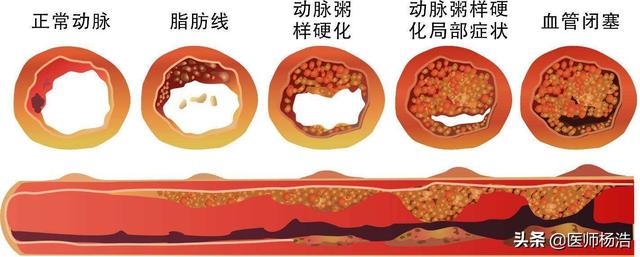
How to prevent blood vessel blockage?
I think through the above explanation, we have a basic understanding of blood vessel blockage, and the arterial plaque mentioned therein is the single most important factor leading to blood vessel blockage, so preventing arterial plaque formation is preventing blood vessel blockage. Arterial plaque is not something that can be solved by infusing blood vessel unblocking fluids once or twice a year. Rather, it is a matter of controlling the risk factors that lead to the formation of arterial plaque in the long term.
Apart from age, heredity and other innate factors that we can't change, but high blood pressure, diabetes, high blood lipids, obesity, smoking, heavy drinking, lack of exercise and other risk factors are within our control. Therefore, usually pay attention to maintain a low-salt, low-sugar and low-fat diet, quit smoking and limiting alcohol, more exercise, weight control and other healthy lifestyles, control blood pressure, blood glucose, blood lipids, etc., you can reduce the formation of arterial plaques, preventing blood vessel clogging.
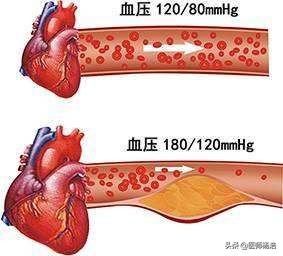
I am physician Yang Hao, specializing in the diagnosis and treatment of common and multiple diseases, chronic disease management, health science. Welcome to like, forward, leave a message, pay attention to this headline, let you live a healthier life!
Real experience to answer you, my friend called me one day, I heard him speak a little slurred, I asked him to drink, he said no, the night before drinking, but, call me when it was about 4.40 p.m., I asked him again, clear-headed? He said very sober ah, he was wondering why I asked him so, and then, I said I heard on the phone his tongue a little less sharp, say rap a little bit of the word I can not hear clearly, I urged him to go to the hospital quickly, he said it is all right, and there can not be anything, at that time, he was 47 years old. I was so sure that it was not normal that I called another big brother who was even closer to my friend, and I said anxiously that he must go to the hospital as a precursor to a blood clot, and that if he was not, we would all be relieved. Big brother on the order of this friend of mine must go, he was 5.50 minutes rushed to the hospital to hang up the emergency room doctor did a CT, and then do not let go, must be hospitalized, said that there has been a blockage of the location, fortunately, not yet blocked, and then hospitalized for 15 days, the doctor also said, and then late completely blocked brain hypoxia, brain cell death will be irretrievable.
Therefore, I summarize, the sudden occurrence of different from the previous, for example, slurred speech, numbness in the hands and feet, drowsiness, depression, etc., should be taken seriously. Or, there are people who drink alcohol, their own home measurement of blood pressure, blood lipids, blood sugar, the index is not normal, hurry to the hospital, regular physical examination twice a year, this is necessary, the body is not a problem to work to feel at ease, the happiness index of life is only high, you say, I wish you good health!

Early symptoms of cerebrovascular blockage depends on the degree of vascular blockage, if it is early, just cavernous cerebral infarction, some people have no symptoms. Some people will have some headache, dizziness; some people will have speech disorders, or some movement disorders on the limbs, if the cerebral infarction is more serious, there will be a sudden loss of activity on one side of the limbs or a sudden loss of speech, which belongs to the emergency of cerebral vascular blockage, and needs to be sent to the hospital immediately to the emergency room.
Heart blood vessel blockage usually refers to the coronary arteries, a common disease is coronary atherosclerotic heart disease, referred to as coronary heart disease, is due to the formation of lipid deposits in the arterial lining of the damage, most commonly found in patients with hypertension, diabetes mellitus, high blood cholesterol, atherosclerotic plaque gradual growth can lead to narrowing of the lumen, the early stage of the chest can be tightness, shortness of breath, fatigue, palpitations and so on, and gradually aggravated by chest pain, and even trigger a heart attack.
Blocked blood vessels are an extraordinary critical condition. Strokes and sudden deaths from ischemic heart disease are often caused by blocked blood vessels. Therefore, detecting the early signs of blood vessel blockage can play a crucial role in saving the patient's life. The occurrence of blood vessel blockage, will often give people the following three very obvious warning signals, as long as we pay attention to blood vessel blockage signals, in advance to do the correct response to the disposal of measures, we can avoid blood vessel blockage caused by death or disability tragedy.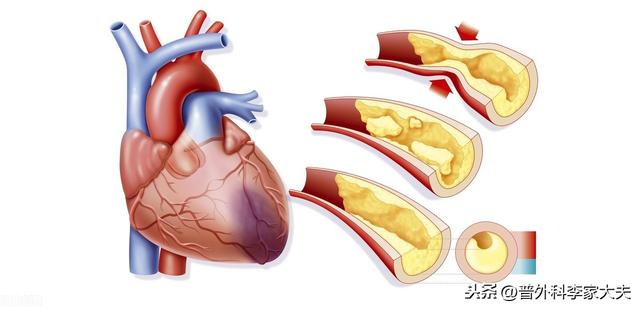
Earliest signals from clogged blood vessels signal high risk groups
The imaging results of a blocked blood vessel are the most accurate warning sign to us.
Early clinical signs of vascular blockage, arguably the last warning sign before complete vascular blockage
Earliest signals from clogged blood vessels signal high risk groups
Often, many patients think that they have a bad life to have a clogged blood vessel. In fact, the truth is not so, whether it is a clogged artery or a clogged vein that occurs, it occurs in a specific group of people, and these groups are what we call high-risk groups.
The factors that can bring about a blockage in a blood vessel are diseases originating from the vessel itself and also emboli produced by organs outside the vessel. Therefore, all those people who can bring about blockage factors are the people who are at high risk of blood vessel blockage, and they are:
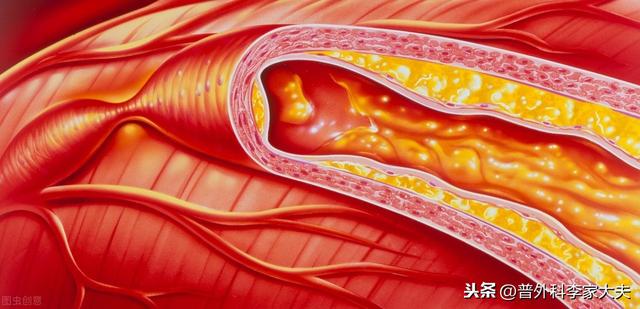
1. Atherosclerosis is the most common disease leading to narrowing and clogging of arterial blood vessels; therefore, allPeople with atherosclerosisallPeople at immediate risk for blood vessel blockageAtherosclerosis is a disease that occurs when a person's arteries are damaged. There are many risk factors that can lead to atherosclerosis in humans, and if these risk factors are not blocked, progression to atherosclerosis is an inevitable process. Therefore, the existence of these high-risk factors of the population, can be said to be the blood vessel blockage of theIndirectly at risk, they are:
- Hyperlipidemic people and those who like foods high in cholesterol and rich in saturated and trans fats.
- Hypertensive patients.
- Diabetics and those on high-sugar diets.
- Patients with homocysteinemia
- Overweight or obese people
- People with unhealthy eating habits: heavy smokers and drinkers; people who are inactive; people with high salt diets.
2. The heart is the power source of blood flow in the human body, therefore, people with heart disease leading to insufficient power or embolus production are also at high risk of vascular blockage. People with heart diseases that commonly lead to cardiogenic vascular blockage are shown below:
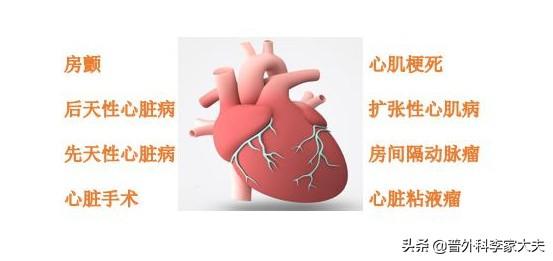
3, deep vein thrombosis is also a common disease of vascular blockage, leading to deep vein thrombosis of the three major causes are: venous damage, slow blood flow and high coagulation of blood, so the existence of these three causes of the population is also a high-risk group of vascular blockage. The common ones are:
- Prolonged bed rest, intraoperative, postoperative and limb braking status and sedentary not going, etc.
- People who are pregnant, postpartum or postoperative, traumatized, taking birth control pills for long periods of time, and tumor tissue lysis products.
- Surgical or traumatic damage to blood vessels.

The imaging results of a blocked blood vessel are the most accurate warning sign to us.
Imaging signals suggesting blockage of blood vessels are accurate and objective warning signs that tell us directly. For example, ultrasound can determine the degree of carotid artery stenosis, and according to the North American Symptomatic Carotid Endarterectomy Test method, the degree of stenosis of the internal carotid artery is categorized into 4 grades based on the degree of narrowing of the internal carotid diameter:
(1) Mild stenosis: <30%;
(2) Moderate stenosis: 30% to 69%;
(3) Severe stenosis: 70% to 99%;
(4) Complete occlusion: >99% stenosis measured in the pre-occlusion state.
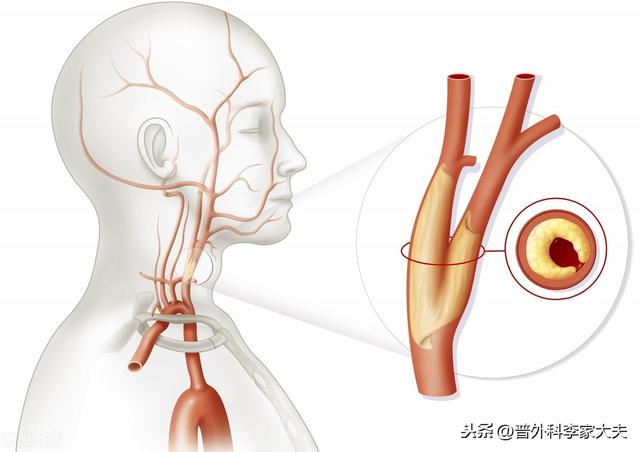
The grading of the degree of stenosis as described above tells us not only how severe the stenosis is, but also what interventions should be taken to interrupt the progression of the condition. In addition to ultrasound, CTA, MRA, and angiography are all excellent methods of vascular imaging that can tell us accurate information.
Early clinical signs of vascular occlusion can be considered as the last warning sign before complete vascular occlusion.
Because this time the vascular blockage where the organs have shown varying degrees of organ ischemia clinical manifestations, if not dealt with in a timely manner, the next step will occur in the blood vessels are completely blocked, where the blood vessels and organs and tissues are ischemic necrosis, the human body fatal and disabling serious harm to the event appeared. Involving different organs vascular blockage early clinical signals are also different, more common are the following cases:
Early signs of a blocked artery in the brain are: The most common is the decline of brain function, which is mildly characterized by dizziness, headache, tinnitus, difficulty concentrating, memory loss, sleep disorders, weakness or stiffness of limbs, unsteady walking, cognitive dysfunction, and limitation of paraplegic movement and sensation.
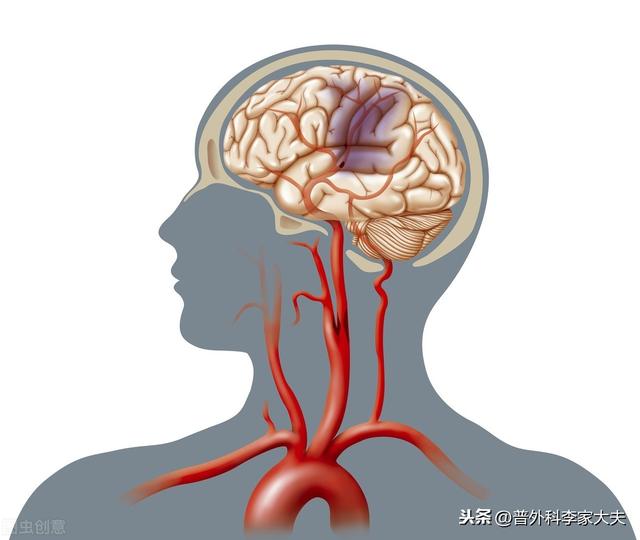
The early signs of a blocked heart artery are: Myocardial ischemia, coronary heart disease, angina pectoris, arrhythmia, cardiac insufficiency, etc.
The early signs of a blocked renal artery are: secondary intractable hypertension, renal atrophy, renal function impairment, renal small vessel sclerosis, proteinuria.
Early signs of a blocked mesenteric artery are: Abdominal pain after a full meal, so that the patient is afraid to eat and lose weight day by day, accompanied by chronic diarrhea and other symptoms of intestinal malabsorption.
Early signs of blocked arteries in the limb are: Diminished or absent dorsalis pedis and popliteal vascular pulsations in the ischemic lower extremities, decreased skin temperature, numbness, pain, and intermittent claudication of the lower extremities.
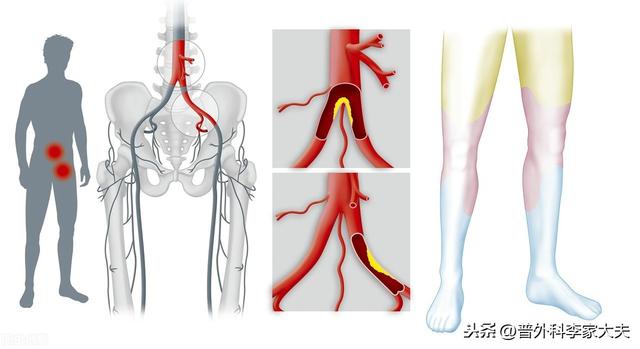
Early Signs of Deep Vein Blockage in the Lower Extremities: After major surgery, prolonged bed rest and sedentary people, swelling of the lower limbs occurs, and both legs have different degrees of edema, with a painful sensation and a drop in the skin temperature of the lower limbs. This is the manifestation of lower extremity deep vein thrombosis leading to lower extremity vein blockage. If the patient stands up one day to move, suddenly appear chest tightness, tightness of breath, hemoptysis performance, it is very likely that the lower extremity venous thrombosis dislodgement, causingEarly Signs of Pulmonary Artery Blockage。
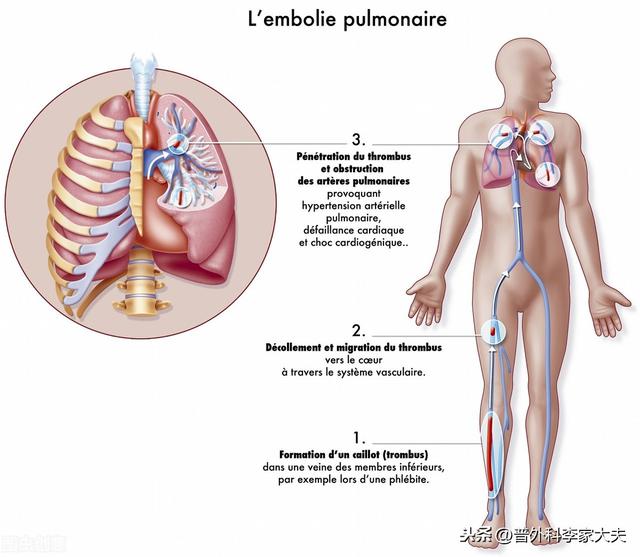
Early Signs of Superior Mesenteric Vein Obstruction: Mesenteric abdominal discomfort, constipation, or diarrhea manifestations.
In conclusion, the occurrence of vascular occlusion before and after the three major signals, the earliest vascular occlusion of the high-risk group signals; followed by imaging tests can accurately tell the degree of vascular occlusion, but also reminds us to carry out the disease intervention; and finally, the early clinical signals of vascular occlusion of the involvement of different organs, if you can be treated in a timely manner, you can still avoid the occurrence of ischemia and necrosis of organs and tissues leading to the occurrence of disabling and fatal events.
According to the 2019 ACC/AHA Guidelines for Primary Prevention of Cardiovascular Disease, prevention involves lifestyle, risk assessment, tobacco, weight, blood pressure, cholesterol management, etc., it is evident that people are becoming more and more concerned about clogged blood vessels and managing them to every detail of their lives.
When the blockage of blood vessels is less than 70%, the body can not feel anything, when the blockage is more than 70% into the advanced stage, the body will have bad feeling. It is recommended that people over the age of 50 have their blood vessels checked regularly.
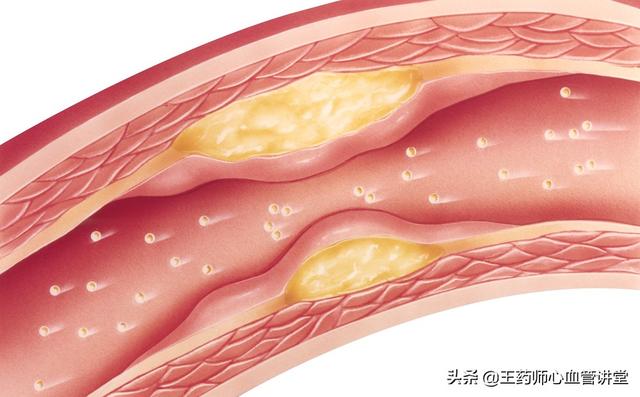
What are the early signs of a blocked blood vessel?
With the process of blood clot formation, these 6 signals will become more and more obvious. If you have 2 or more, check them quickly!
1. Fatigue and weakness, easily sleepy
When the blood is sticky, the blood supply throughout the body becomes slow, and the body can't keep up with the nutrients it needs, so it's easy to experience symptoms of fatigue and weakness. And when the brain is not supplied with enough oxygen, the symptoms of sleepiness will naturally occur.
2. Sudden vertigo
Vertigo is one of the most common symptoms of cerebrovascular blockage, especially when waking up in the early morning. It also occurs after fatigue and bathing.
3. Unexplained leg numbness
If there is a blood clot, it will block the blood vessels, resulting in impeded blood flow to the legs, and is prone to leg numbness. Therefore, leg numbness should not be taken seriously, especially if the numbness is unilateral limb, you should be more careful of blood clots. If the blockage is serious, the problem of leg swelling may also occur.
4. Paroxysmal blurred vision
With poor blood flow, neither nutrients nor oxygen can be supplied to the optic nerve in a timely manner. As a result, the optic nerve and retina will be transiently ischemic and hypoxic, and paroxysmal blurring of vision will occur. Therefore, when transient blackness occurs, it is necessary to check and consult the doctor in time.

5. Severe headache
Any sudden onset of a severe headache should be a cause for concern; it is most likely a sign of a blocked cerebral blood vessel.
6. Elderly rings and transverse earlobe lines
This signal is mostly seen in the elderly population, lipid-like substances deposited in the cornea, prone to the emergence of old age ring. The appearance of transverse lines at the earlobe is also an important symptom of cardiovascular disease in the elderly, which is due to the lack of timely nutritional supplementation of collagen in the earlobe, tissue renewal and repair ability to decline, there is a collapse, thus presenting folds.
When you notice these signals, it is important to get checked and see a doctor. Although these signals do not confirm the diagnosis, they are a kind of distress signal from the body and must not be ignored.
If the thrombus is blocked in the cerebral blood vessels, it can cause necrosis of brain cells, which can lead to lacunar cerebral infarction in mild cases, or lead to stroke and heart attack in severe cases, and the probability of occurrence increases exponentially. If the thrombus is blocked in the peripheral arterial vessels, the patient will experience intermittent claudication of the lower limbs or amputation due to gangrene. If the thrombus is blocked in the small intestine, kidney and other parts, it can cause intestinal necrosis, renal embolism and so on.
I am Pharmacist Wang, dedicated to helping you manage your body by explaining complex and difficult disease knowledge in plain words. Your likes are my greatest motivation! Also, if your family members are also suffering from clogged blood vessels, please forward this article to them!
Passage is painless! Passage is painless!
This is a rather succinct and clear description of the symptoms of a clogged blood vessel, so the earliest symptom of a clogged blood vessel should be pain.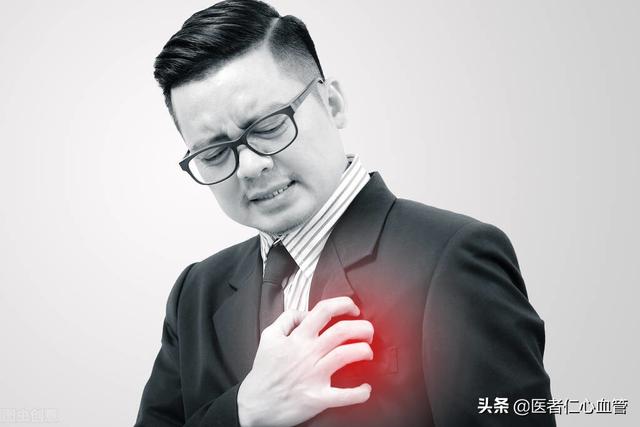
However, the whole body is covered with blood vessels, and the symptoms and manifestations of clogged blood vessels in different parts of the body are different.
What's more, there are acute occlusions and chronic occlusions. Often acute occlusion is more harmful, on the line of acute myocardial infarction, acute cerebral infarction, acute pulmonary embolism is often life-threatening, even sudden death. But chronic occlusion, not necessarily have symptoms, sometimes after, because of other problems, only found, as if someone has had a myocardial infarction, but he did not know, do an electrocardiogram found that after doing imaging found that the blood vessels chronic occlusion.
Various parts of the blood vessel blockage after the performance of different, we briefly introduce the most common, but also the most dangerous two parts: cardiovascular and cerebral blood vessels.
I. Cardiovascular blockage
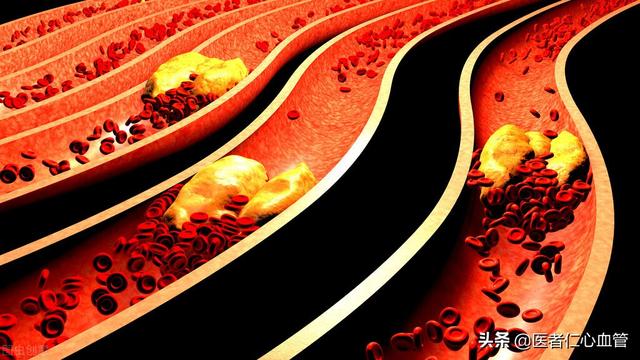
Cardiovascular blockage is myocardial infarction, when myocardial infarction occurs, the most common manifestation is a sudden pressure-like pain behind the sternum, which persists unrelieved, or accompanied by profuse sweating, tightness in the chest and breathlessness, and a sense of near death. Of course, there are some people who die directly and suddenly, and these people may not have had time to feel how hard it is.
Still, 50% of people who have a myocardial infarction do not even know that they have had a myocardial infarction, due to the fact that not all myocardial infarctions are associated with chest pain or precordial pain, and some have atypical myocardial infarctions.
Simply put, any angina that exceeds 20 points should be suspected of myocardial infarction, but angina is not only chest pain or pain in the anterior region of the heart, but also includes toothache, headache, shoulder headache, epigastric headache, and pain in the back, which may be angina pectoris, and these symptoms, if persistently unrelieved, should be highly suspected of cardiovascular blockage.
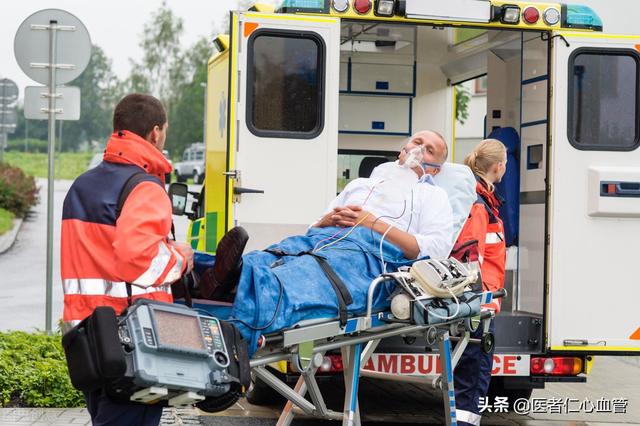
The only thing that can save your life at this time is to open the blood vessels at the first time, and the only way to open the blood vessels is to dissolve the thrombus or stent, so angina pectoris persists unrelieved, be sure to call 120, go to the hospital right away, and immediately cooperate with the doctor for active treatment after the diagnosis of myocardial infarction.
To determine whether a cardiovascular blockage is present, for acute myocardial infarction, myocardial infarction can be diagnosed by meeting two of the symptoms + ECG + cardiac enzymes.
II. Cerebrovascular blockage
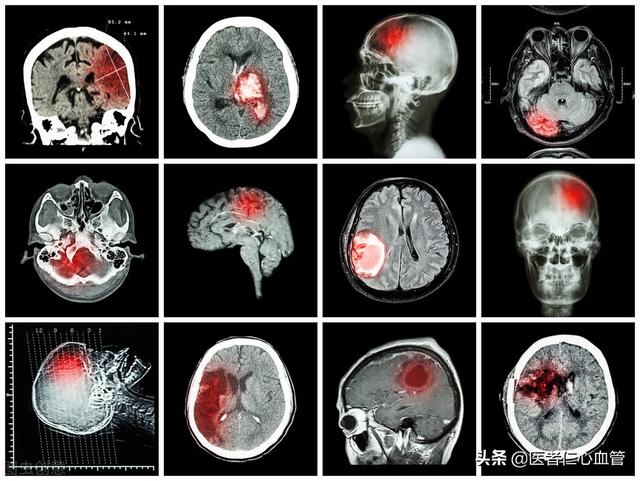
Cerebrovascular blockage is cerebral infarction, most people have a cerebral infarction, can be detected in time, because it is very simple, suddenly can not speak, mouth crooked, arms and legs can not move, walking can not be straight line, etc., these symptoms are obviously different from the usual, most people can go to the hospital as soon as possible, to do a brain CT basically can be diagnosed. There may also be dizziness, headache, numbness of the limbs, numbness of one side of the face or hands and feet, some tongue numbness, lip numbness or one side of the upper and lower limbs numbness, sudden weakness of one side of the limbs or inflexible activities, unsteady walking, slurred speech, asked questions are not answered, nausea and vomiting or eruption, facial paralysis and tongue paralysis, hemianopsia, choking and coughing on drinking water, dysphagia, loss of consciousness, mental retardation, lethargy, and so on.
The diagnosis of cerebral infarction can be acutely confirmed by brain CT or MRI.
Third, other parts of the blood vessel blockage
Because the whole body blood vessels may be blocked, so can not be introduced one by one, simply say pulmonary vascular blockage, there will be low blood pressure, fast heart rate, chest tightness, breathlessness, chest pain and so on; to be confirmed by electrocardiogram, D2 polymer, pulmonary vascular CT; for example, lower extremity vascular blockage, there may be intermittent claudication, pain and so on, can be further diagnosed through the lower extremity vascular ultrasound.
Fourth, the causes of blood vessel blockage

The main reason we talk about clogged arteries is that the atherosclerotic plaque breaks down and forms a blood clot, which clogs the blood vessel. So atherosclerosis is the root cause of blood vessel blockage. Then the root cause of atherosclerosis is the root cause of blood vessel blockage, long-term smoking and drinking, obesity, unhealthy diet, no exercise, staying up all night, hypertension, diabetes, hyperlipidemia and so on will aggravate the dynamic atherosclerosis.
Therefore, unhealthy lifestyle and not controlling the three highs are the most fundamental causes of blood vessel blockage, and to prevent blood vessel blockage, you have to start with a healthy life and controlling the three highs!
This question and answer are from the site users, does not represent the position of the site, such as infringement, please contact the administrator to delete.